What is AIR (Artist-in-Residence)? (2):
A Sculpture Symposium
By Murata Tatsuhiko
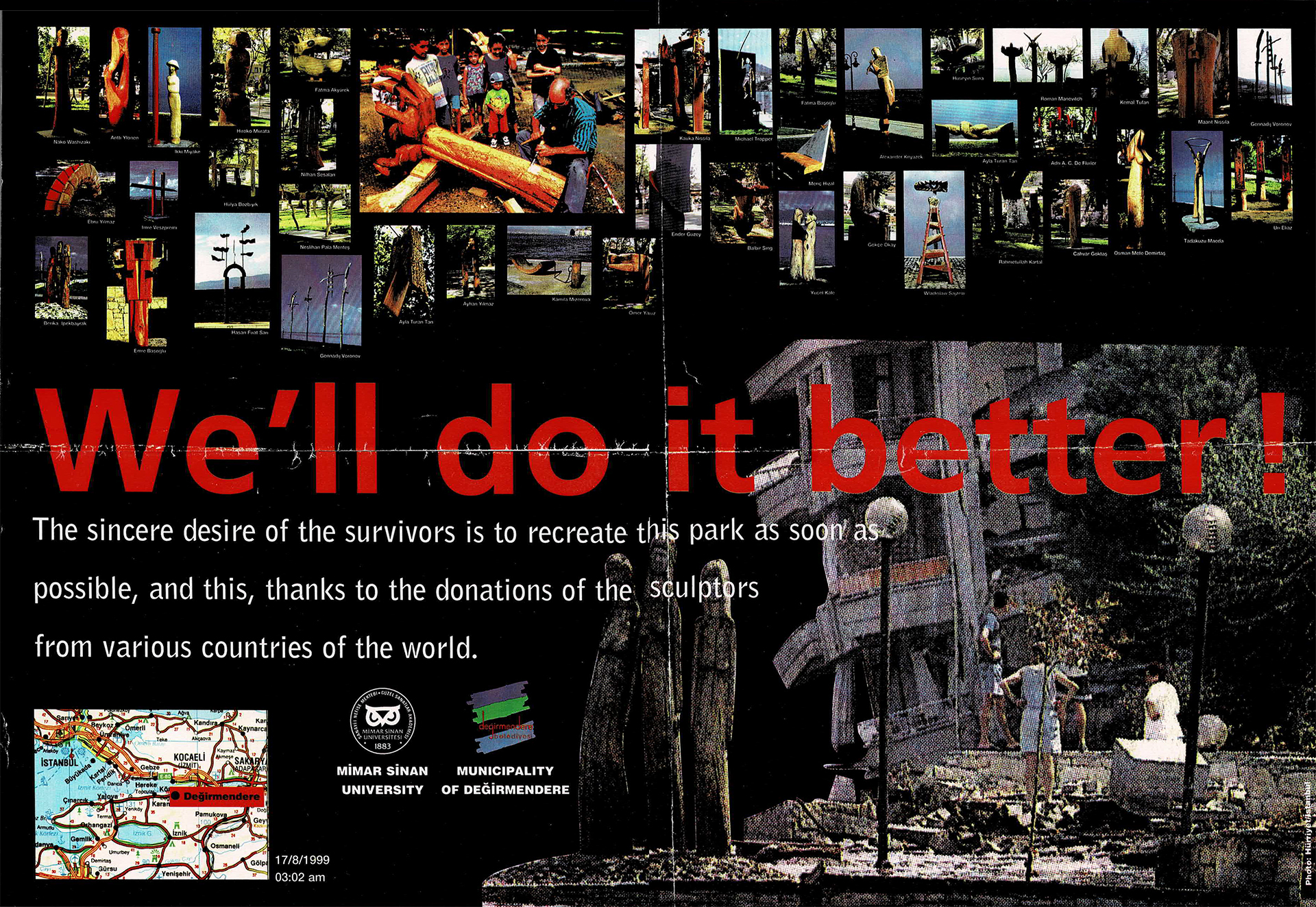
(Calling for resumption of the symposium the year after the August 1999 İzmit earthquake)
The Youkobo AIR program began with a visit in 1988 by a married couple from Turkey, an architect and a sculptor. It was enlightening to hear from them during their stay about the situation regarding residencies they had experienced. “Artist-in-residence” was none other than a term indicating the situation in which an artist lives/works in a particular location. It referred, for example, to a “studio and accommodation facility” forming a space/container for the artist’s activities, and was used to describe working on-site as part of an art event such as an art festival program, and even as the name of a program at a sculpture symposium in a stone-producing area. I also learned that depending on the combination of the nature of the actual activities of the artists and the sources of funding, residencies could take various forms.
The following year, 1989, after the couple had returned home, I got the opportunity to visit Istanbul and had the valuable experience of learning firsthand about the actual conditions surrounding AIR activities there and throughout Europe. As an offshoot of this investigation, we also got the opportunity to participate in a sculpture symposium in Turkey. My partner, Hiroko, who is also a sculptor, received an invitation to a wooden sculpture symposium in Değirmendere, a town on the Sea of Marmara coast located on the Asian side of Istanbul. Co-hosted by the faculty of fine arts at a state university and the local municipality and first held in 1993, the symposium gained international status the following year and continued to be staged as part of a scheme to develop sculpture parks in green spaces in the middle of the town and on the Sea of Marmara coast. [*1]
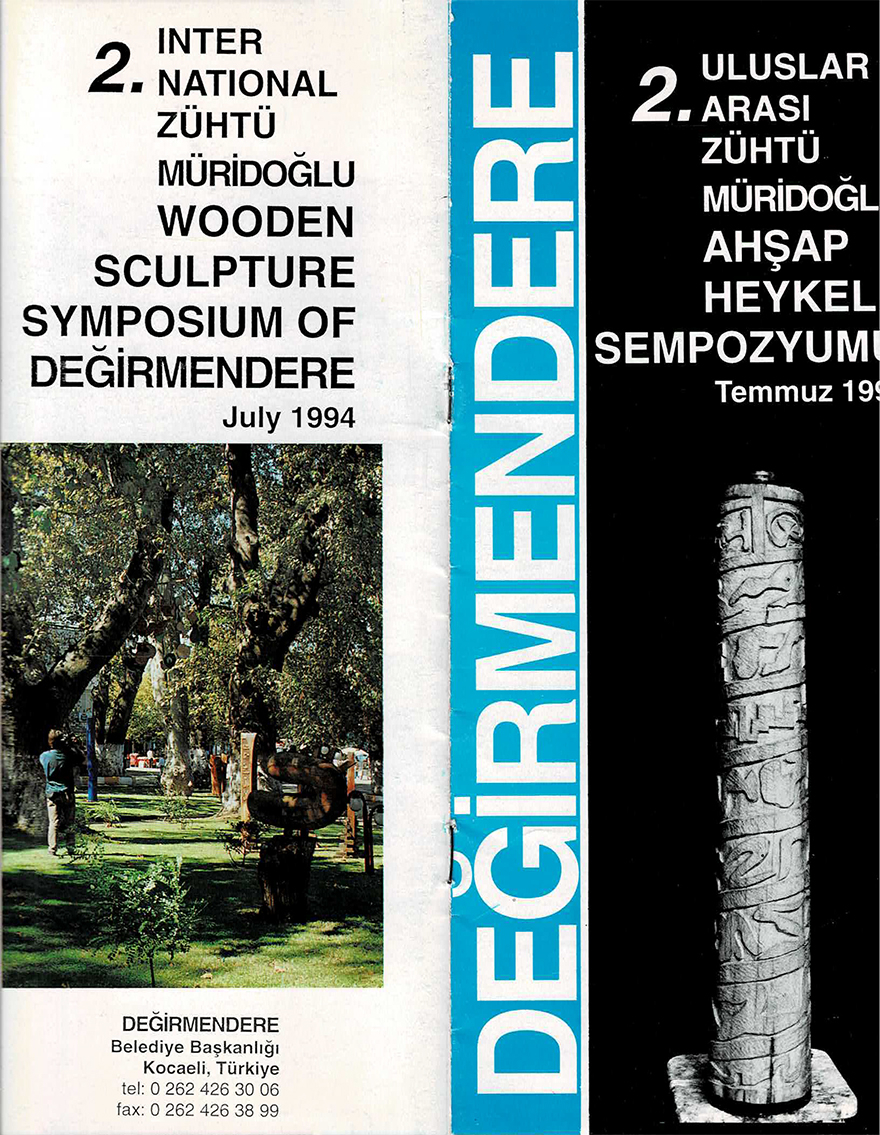
Symposium catalogue cover

Results presentation/party announcement
For a month and a half in July and August 1994, sculptors from Turkey, India, Finland, and Japan lived under the same roof and worked together on wood sculptures. Hiroko described her experience as follows:
It was a period when I was less involved in my own creative activities due to the demands of childrearing, housework, and teaching art to junior and senior high schoolers, and while the children’s painting classes I ran at home were successful in their own way, it was also a period when I was beginning to think about opening a proper school for adults and engaging in activities with other artists. As a result of meeting the Turkish couple around the same age as me who taught architecture and sculpture, I unexpectedly got the chance in 1994 to participate in a sculpture symposium in Turkey.
Every day was exciting and the time I spent at the symposium was an absolute delight. However, I did experience some loneliness and anxiety. Unlike today, computers and smartphones were not widely used. Being far away from Japan and alone in a foreign country for the first time, the faxes from my family that arrived almost every day provided much-needed emotional support. Nevertheless, the experience in Turkey became a great motivation, with the keen sense I got of people’s affection, my own lack of language ability, and the importance of location and opportunity encouraging me to think about my own future. At the same time, I felt it was my duty to ensure the experience did not end there by passing it on to artists in Japan. In particular, to colleagues and juniors. In fact, dispatches to Turkey continued after that, and just from memory more than ten Japanese sculptors were welcomed in Değirmendere, while at the same time I strived to get sculptors from Turkey accepted in Japan. In this latter regard, I received cooperation from Field Work in Fujino, an outdoor art exhibition planned and run by local artists in the Kanagawa town of Fujino (now part of Sagamihara), and later went on to help them with their activities.
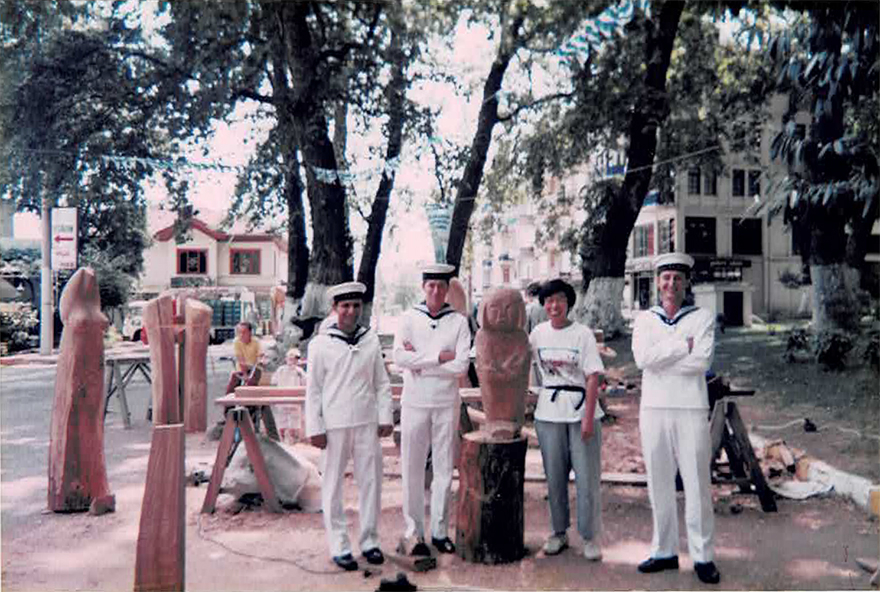
Hiroko on site with work in progress. Photo by Fert Ozsen
Together with these ongoing dispatches to the wooden sculpture symposium, exchanges with stone sculpture symposia in areas that produced marble, granite, and other types of stone, and with creative symposia on university campuses also grew. Another pleasing phenomenon was the mutual expansion of opportunities for participation beyond the two countries via participating artists in symposia that were strongly international in character. Intercultural exchanges among artists of various ethnicities seemed to be expanding endlessly. Alongside opportunities for participation from Japan to Turkey, we also endeavored to focus on the acceptance of overseas artists in Japanese symposia. Give and take, inviting back when invited, the creation of opportunities for experience, the continuation of exchanges and reciprocation, and the provision of more opportunities to young artists to “enable young people to travel”…
In the course of pursuing these objectives, from a Finnish artist who participated in the wood sculpture symposium in 1994, an invitation arrived to attend the winter Bosnia Icescape Symposium 1996 in their hometown of Oulu. (A report on the ice festival will have to wait for another occasion)
In Değirmendere, Turkey, an unforgettable event occurred. A postscript from Hiroko:
The unforgettable event was the 1999 İzmit earthquake. [*2]
Early on the morning of August 17, after the seventh symposium had ended, Değirmendere, which was close to the epicenter, was struck by a massive earthquake. The sculpture park being installed along the coast, which was nearing completion, was swallowed by the Sea of Marmara and disappeared along with all the works, the hotel that served as accommodation was destroyed, and the town office was also seriously damaged. Following the quake, we immediately began undertaking fundraising activities with Turkish friends living in Japan and other interested parties. Değirmendere later used some of the money we raised to build a cultural exchange hall.
There is a curious sequel to this episode. Some time after the quake, a work by a Japanese artist that was thought to have been swallowed by the Sea of Marmara was apparently discovered in the storefront of an antique store in Istanbul…
[*2] 1999 İzmit earthquake
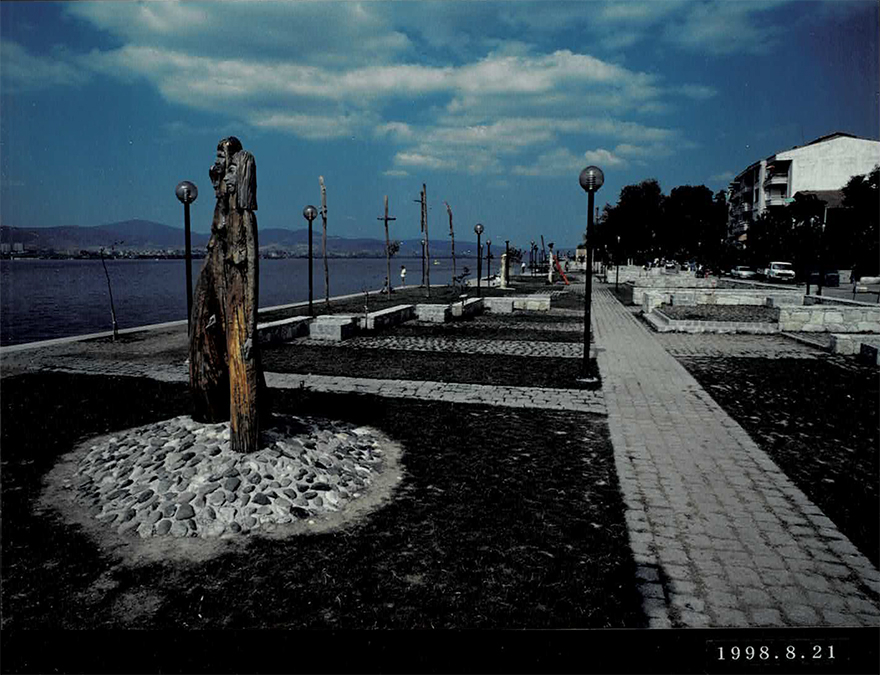
The sculpture park under construction in 1998. photo by Ikuo Nakayama
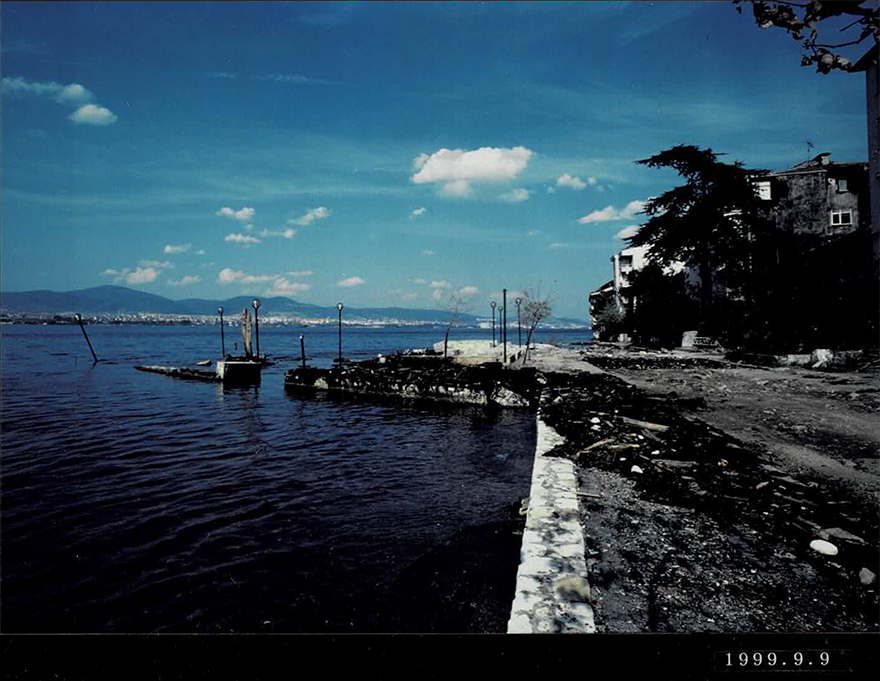
The site of the sculpture park in 1999, one month after the quake. photo by Ikuo Nakayama
- “What is AIR? (1): The origins of the Youkubo AIR program“
- “What is AIR? (3): 50 years of Youkobo, 30 years of residency activities, and the Fujino annex“
- “What is AIR? (4): The discovery of microresidencies“
- “What is AIR? (5): Putting Y-AIR into practice and the start of an international network“
Tatsuhiko Murata
Having worked as an engineer for almost 30 years, together with his partner, Hiroko Murata, established their own art center as Youkobo Art Space since 1988, has worked to promote art through the running of a dynamic Artist Residency Program in Tokyo. From 2010 he initiated research into artist-run and micro-scale residency programs, so called MICRORESIDENCE, throughout the globe with an aim to increasing their recognition and also visibility appeal that the AIR program as important social vessel in the society.
Since 2015, he had been implementing Y-AIR, AIR for young (more opportunities for AIR activities to young artists!) through residency activities and collaboration with art universities. Co Director of Youkobo Art Space, Honorary board member of Res Artist.